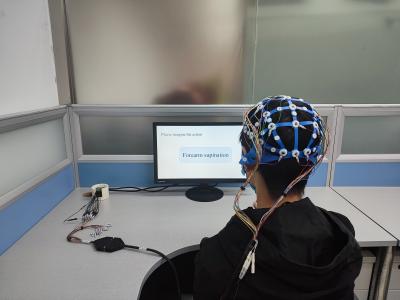EEG
This dataset consists of electroencephalography (EEG) data from 6 participants aged between 23 and 28 years, with a mean age of 25 years. The dataset is the motor imagery EEG signals of six different rehabilitation training movements in the upper limbs. We recruited six participants aged between 23 and 28 years, with a mean age of 25 years. Three of the participants are male. Subjects sat in a comfortable chair, facing the computer monitor that displayed the trial-based paradigm and their right arm was naturally placed on the table to avoid muscle fatigue.
- Categories:
 648 Views
648 Views
THERE was once an Emperor who had a horse shod with gold. He had a golden shoe on each foot, and why was this? He was a beautiful creature. He had slender legs, bright, intelligent eyes, and a mane that hung down over his neck like a veil.
- Categories:
 93 Views
93 Views
THERE was once an Emperor who had a horse shod with gold. He had a golden shoe on each foot, and why was this? He was a beautiful creature. He had slender legs, bright, intelligent eyes, and a mane that hung down over his neck like a veil.
- Categories:
 143 Views
143 ViewsObjective. Currently, few non-invasive measures exist for directly measuring spinal sensorimotor networks. Electrospinography (ESG) is one non-invasive method but is primarily used to measure evoked responses or for monitoring the spinal cord during surgery. Our objectives for collecting this dataset were to evaluate the feasibility of ESG to measure spinal sensorimotor networks by determining spatiotemporal and functional connectivity changes during single-joint movements at the spinal and cortical levels.
- Categories:
 795 Views
795 Views
EEG Data Acquisition Using the Muse Device: Meditation and Rest Stages of Participants
This study aimed to investigate electroencephalogram (EEG) patterns during meditation to gain insights into the distinctions among practitioners with differing levels of experience. We analyzed EEG data from a cohort of seven participants with a unique background in Vipassana meditation, in order to discern how disparities in experience levels manifest in their neural activity.
- Categories:
 536 Views
536 Views
Driving excitement may lead to speeding and serious traffic accidents. Although olfactory stimulation has been proven to be effective in regulating human emotions, the mechanism driving excitement is still unclear. This study aims to explore the regulatory effects of different arousal and valence levels of odors (mint, rose, banana, and musk) on driving excitement, deepening our understanding of the relationship between drivers emotions and driving experience.
- Categories:
 216 Views
216 Views
Nowadays, more and more machine learning models have emerged in the field of sleep staging. However, they have not been widely used in practical situations, which may be due to the non-comprehensiveness of these models' clinical and subject background and the lack of persuasiveness and guarantee of generalization performance outside the given datasets. Meanwhile, polysomnogram (PSG), as the gold standard of sleep staging, is rather intrusive and expensive. In this paper, we propose a novel automatic sleep staging architecture calle
- Categories:
 192 Views
192 Views
<p><span style="font-size: 10.0pt; font-family: 'Times New Roman',serif; mso-fareast-font-family: 'Times New Roman'; border: none windowtext 1.0pt; mso-border-alt: none windowtext 0in; padding: 0in; mso-ansi-language: EN-US; mso-fareast-language: EN-US; mso-bidi-language: AR-SA;">Many neurophysiological measurements are affected by mental state tasks.
- Categories:
 286 Views
286 Views


